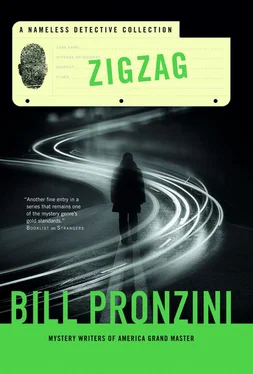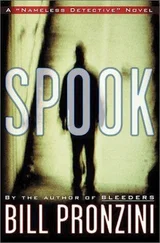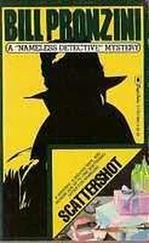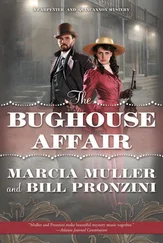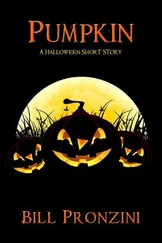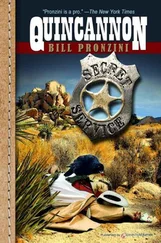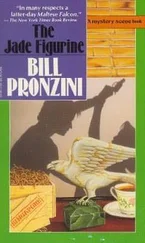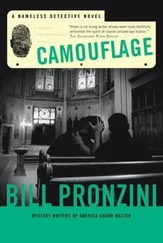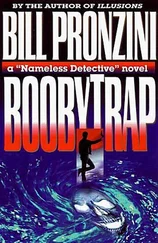“Do you recall if there was an employee he was particularly friendly with?”
“I don’t, no. I didn’t know him well, you understand. Thirty people working for me, can’t get to know them all.” He sounded regretful of the fact. “But he was a good employee; I can tell you that. Always on time, hardly ever missed a day, liked working with plants, flowers, trees. Never any problems with him until the last month or so before he was arrested.”
“Oh? What happened then?”
“Well, he began drinking rather heavily. Not on the job, so far as I know, but he came to work badly hungover three or four times. Missed a couple of days, too. Hal Waxman finally had to give him a shape-up-or-else warning.” Another headshake. “I hate to fire a good man, but when I can’t count on him anymore and his conduct reflects badly on the business...”
“Do you have any idea what caused the sudden binge drinking?”
“No. Something weighing on his mind, I suppose.”
“You mentioned Hal Waxman. Who would he be?”
“Our yard foreman. You might talk to him.”
“I’ll do that. Where do I find him?”
“In the distribution center, probably. I’ll phone over there and tell him you’re coming.”
Distribution center was a polite term for warehouse, the largest of the three buildings on the lot. It was crammed with all sorts of landscaping materials and machinery that included rototillers, backhoes, John Deere Gators. A greenhouse attached to the rear was lush with plants, every kind from the bedding variety of flowers to large shrubs, and multiple varieties and sizes of trees in tubs.
Hal Waxman was waiting for me at the open entrance doors. The yard foreman looked to be in his early forties, a pear-shaped man with a matching pear-shaped face — narrow at the brow, somewhat broad across the cheeks and jawline. He wore a pair of green overalls with Kennedy Landscaping Designs stitched over the breast pocket, had a clipboard in one hand and an empty black-bowled briar pipe clamped between his teeth.
He saw me looking at the pipe while we shook hands. “I quit smoking fifteen years ago,” he said a little ruefully, “but I can’t get out of the habit of chewing on the stem.”
“I’m an ex-smoker myself. Coffin nails, to my everlasting regret.”
“Yeah. You still get cravings?”
“Not in a long time.”
“I do, but only after a big meal. Well. The boss said you wanted to ask me about Ray Fentress?”
“About the last month he was employed here, yes.”
“Uh-huh. Before he started boozing and his life went to hell. Damn shame. Nice guy, steady, no trouble until then.”
“You have any idea what happened to change him?”
“No,” Waxman said. “I asked him straight out the morning he came in still half in the bag, but he wouldn’t talk about it. Whatever it was, it was eating hell out of him.”
“When exactly did it start, do you remember?”
He worked his memory, gnawing audibly on the pipe stem like a dog worrying a stick. “While we were doing a major relandscaping job at the Holloway estate in Burlingame. Fountains, waterfalls, flagstone paths, you name it.”
“Fentress worked on that job?”
“From the first. About three months.”
“Did anything happen during that period that might explain his sudden drinking?”
“Not that I know of. Everything went real smooth, no problems. Well, except for the Holloways’ young daughter, but her behavior didn’t have anything to do with Ray.”
“Behavior?”
“She liked to parade around in a bikini, her and some of her friends, and flirt with the crew.” Waxman shook his head disapprovingly. “Spoiled rich kid. If she were my kid, I wouldn’t have put up with it.”
“Just harmless flirting, then?”
“Well, none of the men said otherwise. Or seemed to mind except when she followed them around and got in their way. Maybe she was the reason for the stop-work order, but I don’t see how, since nobody here complained about her.”
“Stop-work order?”
“Mr. Holloway called it in when we had less than three weeks left on the job. No workmen allowed on the property until further notice.”
“He didn’t give a reason?”
“Nope. Just the order. Then a couple weeks later, somebody in his office calls up and says okay, now we can go ahead and finish up.”
I chewed on that before I said, “Can you tell me exactly when the stop-work order was issued?”
“Must’ve been the middle of June,” Waxman said. “I remember because it was right after the Fourth of July that the crew went back to work.”
“Middle of June. Just about the time Ray Fentress was arrested.”
“Say, that’s right. Day or two afterward, I think it was. But that couldn’t’ve had anything to do with Ray or his boozing. I mean, I don’t see how it could, do you?”
“No,” I said, “I don’t.”
Coincidence, probably, I was thinking as I returned to my car. Puzzling, but irrelevant. Even if there’d been some sort of personal connection between Fentress and the Holloway family that had triggered the change in him, it had all happened nearly two years ago; a connection, after all that time, to the double shooting at Floyd Mears’ cabin seemed inconceivable.
And yet...
I’ve had stranger cases, a few with such seemingly disjointed facts as these that turned out to be interrelated after all. This one was a muddle no matter what linked up and what didn’t, and I was fresh out of other leads to help untangle it. Unless I wanted to report failure to Doreen Fentress and walk away from the investigation — and I was not ready to do that just yet — I owed it to her and to myself to explore even the most tenuous possibilities.
When I got back to South Park, the noise level from the renovation work on the three-quarter-acre oval seemed even louder than usual. The clamor, continual when the weather permitted, penetrated the old walls of our building and made conducting business a literal headache at times. Not that Tamara or I begrudged the necessity for it; on the contrary. The “town square of Multimedia Gulch,” smack in the middle of SoMa and its technology ecosystem, had become something of an eyesore in recent years — dead grass, cracked asphalt paths, sycamores and elms in poor shape, the creosote-covered children’s play structures so dilapidated the city had finally removed them, leaving a sandy pit that had devolved into a dog run. Finally a group of residents and businesses, ours included, had gotten together and spearheaded the renovation, the first in more than forty years. When it was finished, South Park would have wider pathways, open meadows and raised grass hillocks, plazas, concrete retaining walls with benches, and a new kids’ play area. The sooner the better, for more reasons than one.
In the office I asked Tamara to find out anything that might be even remotely relevant about the Holloways of Burlingame. She was busy with other, more pressing work, so it took a while for her to accommodate the request.
“I pulled up some interesting bits,” she said when she called me into her office. “Might be worth looking into.”
“Such as?”
“Let me give you a little background on the Holloways first. The family head, Vernon, is a near one-percenter — not Silicon Valley mega-rich, but worth around twenty mil on paper. Venture capital profits. Has a rep as a cutthroat businessman.”
“Cutthroat meaning what? Honestly aggressive, or one of the fast and loose players?”
“None of those dudes ever got where they are without their share of dirty tricks.”
“Any specifics I should know about?”
“Well, Holloway’s clean enough on the surface. No ties to illegal activities, never the subject of any kind of investigation.” Tamara consulted her computer screen. “Owns the estate in Burlingame outright, bought it eleven years ago for four mil. Pays his taxes on time, what little bite there is after his accountants finish finding all the loopholes. Donates to half a dozen charities. Pays alimony to two of his three ex-wives — off the money hook with the third because she found herself an even richer sugar daddy.”
Читать дальше
